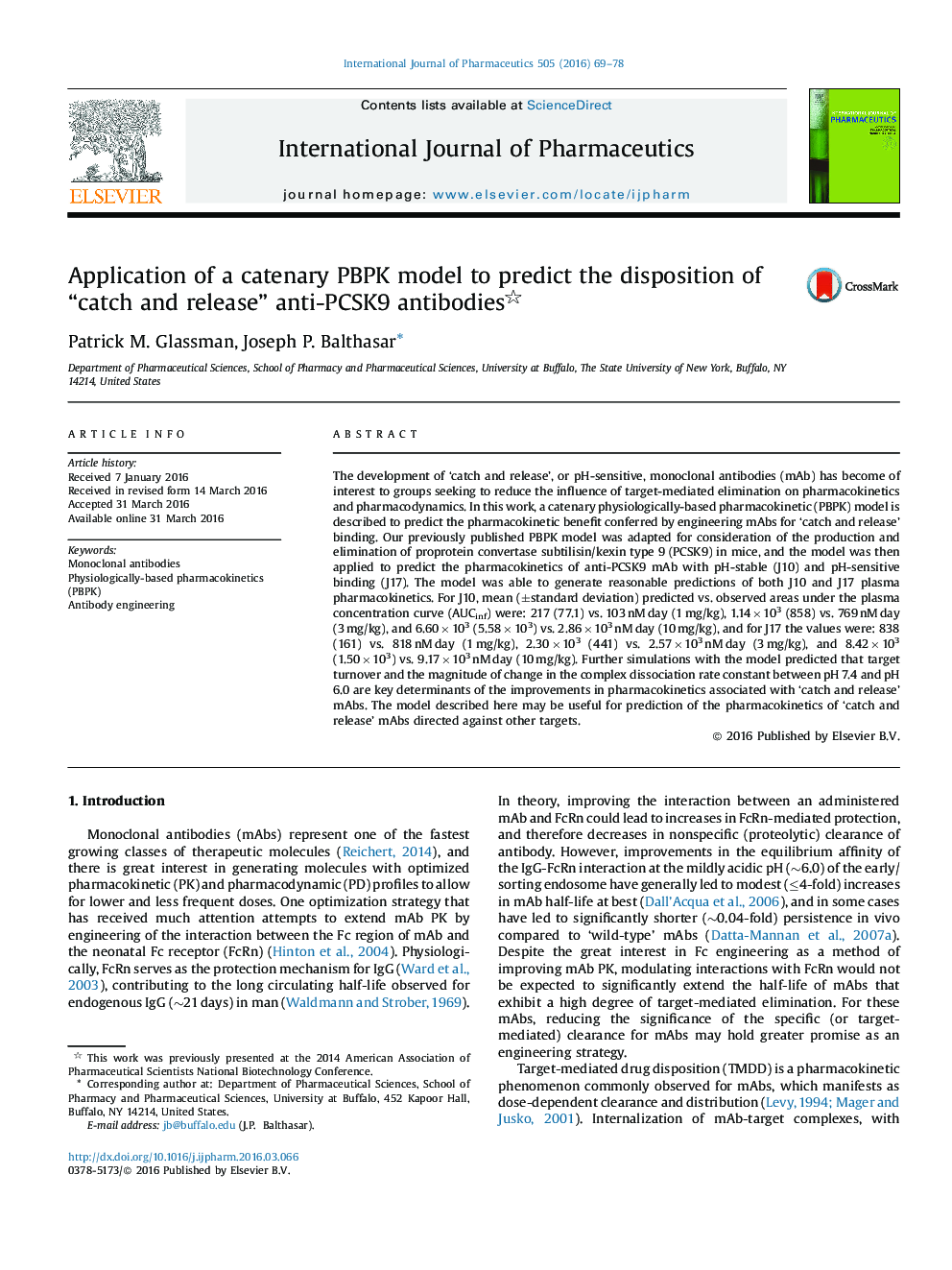| Article ID | Journal | Published Year | Pages | File Type |
|---|---|---|---|---|
| 2500859 | International Journal of Pharmaceutics | 2016 | 10 Pages |
The development of ‘catch and release’, or pH-sensitive, monoclonal antibodies (mAb) has become of interest to groups seeking to reduce the influence of target-mediated elimination on pharmacokinetics and pharmacodynamics. In this work, a catenary physiologically-based pharmacokinetic (PBPK) model is described to predict the pharmacokinetic benefit conferred by engineering mAbs for ‘catch and release’ binding. Our previously published PBPK model was adapted for consideration of the production and elimination of proprotein convertase subtilisin/kexin type 9 (PCSK9) in mice, and the model was then applied to predict the pharmacokinetics of anti-PCSK9 mAb with pH-stable (J10) and pH-sensitive binding (J17). The model was able to generate reasonable predictions of both J10 and J17 plasma pharmacokinetics. For J10, mean (±standard deviation) predicted vs. observed areas under the plasma concentration curve (AUCinf) were: 217 (77.1) vs. 103 nM day (1 mg/kg), 1.14 × 103 (858) vs. 769 nM day (3 mg/kg), and 6.60 × 103 (5.58 × 103) vs. 2.86 × 103 nM day (10 mg/kg), and for J17 the values were: 838 (161) vs. 818 nM day (1 mg/kg), 2.30 × 103 (441) vs. 2.57 × 103 nM day (3 mg/kg), and 8.42 × 103 (1.50 × 103) vs. 9.17 × 103 nM day (10 mg/kg). Further simulations with the model predicted that target turnover and the magnitude of change in the complex dissociation rate constant between pH 7.4 and pH 6.0 are key determinants of the improvements in pharmacokinetics associated with ‘catch and release’ mAbs. The model described here may be useful for prediction of the pharmacokinetics of ‘catch and release’ mAbs directed against other targets.
Graphical abstractFigure optionsDownload full-size imageDownload high-quality image (109 K)Download as PowerPoint slide
